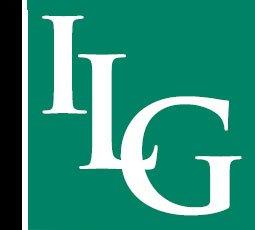Sustainability Yields Fiscal and Economic Benefits
The dissolution of redevelopment agencies coupled with the lingering recession’s effects left many cities seeking new approaches to local economic development. Two new resources from the Institute for Local Government (ILG) provide practical tips on proven techniques that local leaders can use to enhance their communities’ economic prosperity and fiscal health.
Making Prosperity Sustainable
How can local communities reap fiscal and economic benefits from sustainability programs such as energy efficiency, green infrastructure, water and wastewater management, well-designed communities and other best practices? In an era of sluggish job growth and tight fiscal constraints, local leaders may not realize the potential power of investing in sustainability. Communities that have implemented sustainability strategies offer mounting evidence that these approaches can help improve both the local area’s economic prosperity and the agency’s fiscal health.
A new issue brief, Prosperity That Lasts: Building Economically Sustainable Communities, is available online as a free download. It outlines a number of strategies and success stories from cities and counties that have boosted their local economy and bottom line with smart sustainability investments and practices. The issue brief includes links to resources that can help city leaders consider whether and how to make investments or launch similar programs in their own community.
Engaging the Public in Economic Development
One essential economic development tool that may be overlooked is public engagement, which involves the whole community in charting a path to shared prosperity and an improved quality of life. Another new publication, Engaging the Public in Economic Development, describes practical ways that local leaders can help residents develop a shared knowledge and ownership of local economic development policies and programs, thus increasing their potential effectiveness and impact over time.
Understanding the unique conditions within each jurisdiction and how they affect diverse people and various community sectors can help develop short- and long-term priorities that encourage economic competitiveness and increase fiscal health.
Many residents may have a clear idea about what they want in their community, but as economic development professionals know, this is much easier said than done. Before considering a public engagement strategy, it’s important to conduct an internal assessment of your community. The assessment should include an analysis of business, education, transportation, communication, health and income opportunities and disparities. It’s also important to understand the leadership and development capacity, cultural practices and social capital. Much of this information may already exist as a consequence of local planning, redevelopment or regional planning projects. Understanding the current state of your community will help identify the process and resources that can — and should — be applied to a public participation effort.
Because local challenges and opportunities are as varied as individual communities, engaging the public helps incorporate views from a variety of perspectives and offers new avenues for implementation best suited to local circumstances, conditions and priorities.
The Three Pillars of Community Prosperity
Communities prosper when they simultaneously pursue and improve:
- Economic opportunity and fiscal stability;
- Environmental quality; and
- Community well-being.
Sustainability programs and investments can help local agencies put each of these three pillars of prosperity in place. This “triple bottom line” approach measures success through a combination of economic, environmental and community performance indicators rather than through a single lens.
The triple bottom line offers a way for local agencies to ensure that their programs, practices and investments achieve multiple benefits concurrently, thus leading to a more prosperous community over the long term. Achieving multiple benefits from a suite of sustainability strategies helps local communities maximize the impact of limited fiscal, staff and other resources — and build greater support for their policies and programs.
This article appears in the May 2014 issue of Western City
Did you like what you read here? Subscribe to Western City

